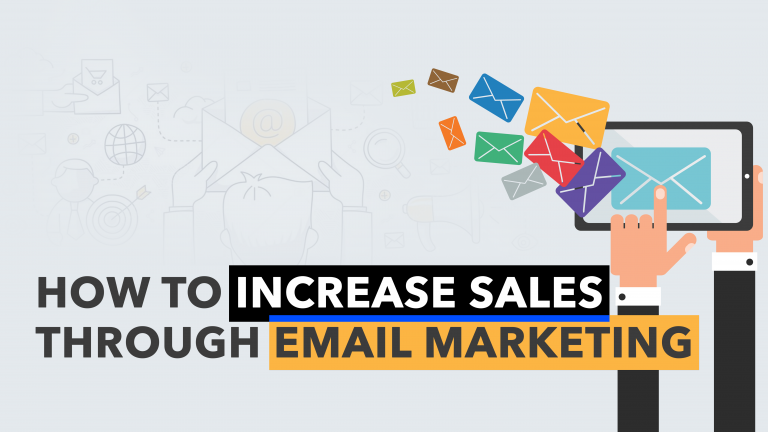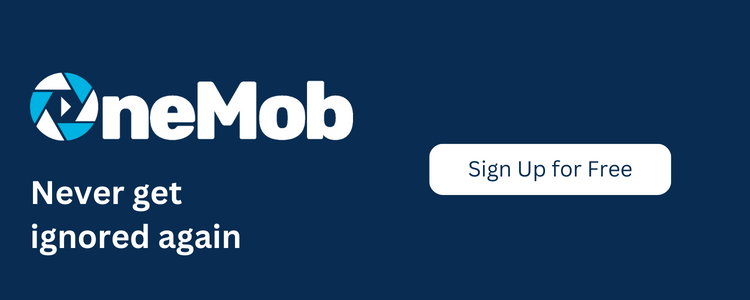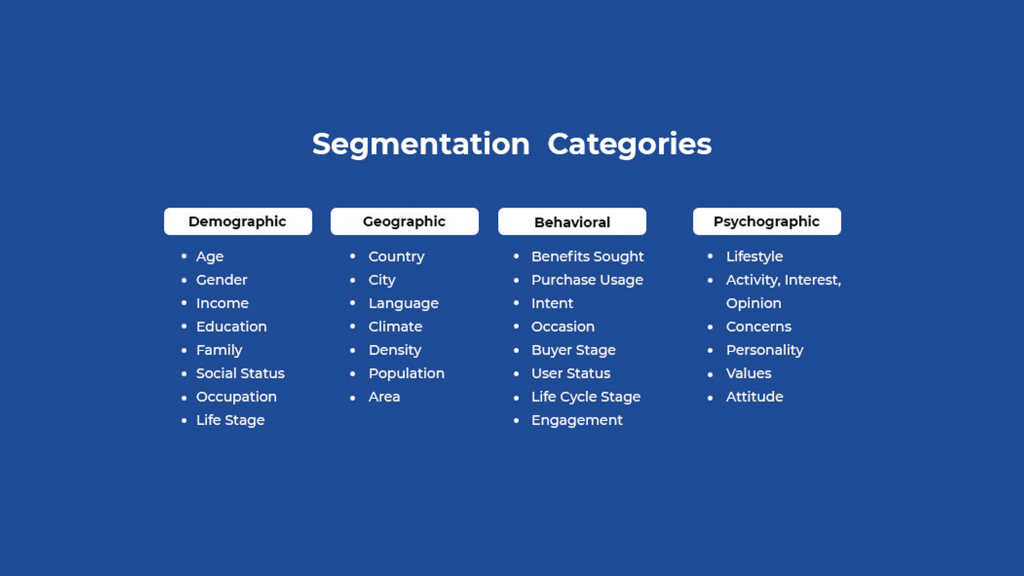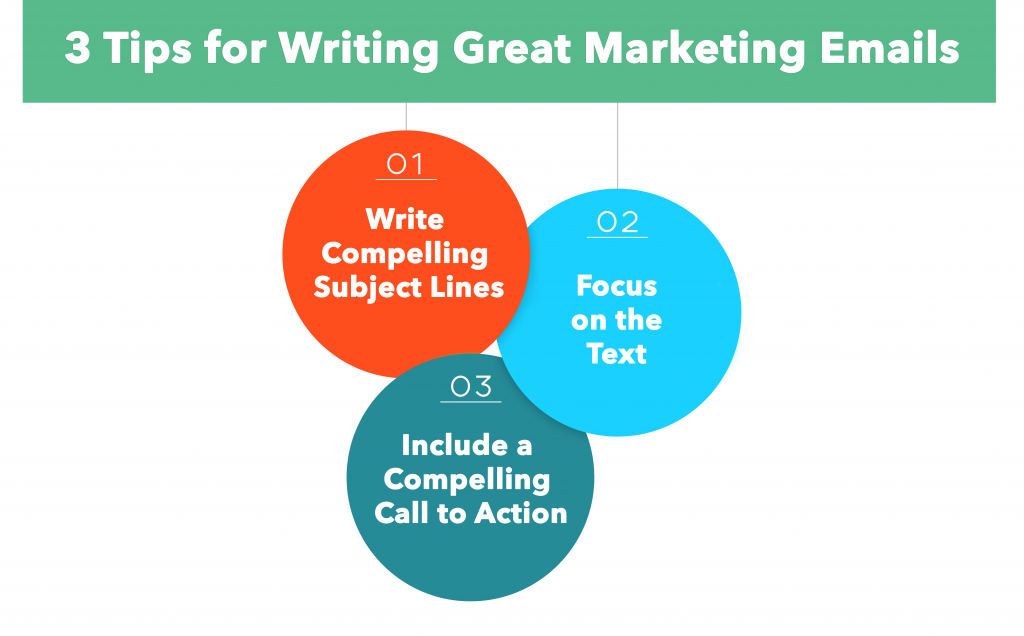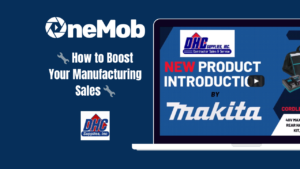Did you check your email today? For most of us, the answer is probably yes. Research shows that over 4 billion people use email regularly, and over 300 billion emails are sent daily. So, chances are you’re one of the billions of people who start their day with a cup of coffee and a brief scan of their inbox.
Businesses worldwide have been taking advantage of these statistics for a long time through email marketing campaigns. Email marketing is a way for companies to get their information in front of potential customers. Businesses can use email marketing to promote products and services, foster relationships with customers, generate leads, and build brand awareness. The possibilities are endless.
Email has been around for over 50 years, and because of its high usage rates, remains one of the most powerful and effective ways for companies to reach a large audience quickly and efficiently.
For every dollar a business spends on email marketing, they get an average return rate of $42. Considering the tools and automation software that’s available, it’s cost-effective and easy to set up an email marketing campaign that can generate huge revenues for a company.
In this article, we will define what email marketing is, how to create effective campaigns that will make the most of your effort, and share everything you need to know to increase sales through email marketing.
Email Marketing Vs Cold Email Outreach
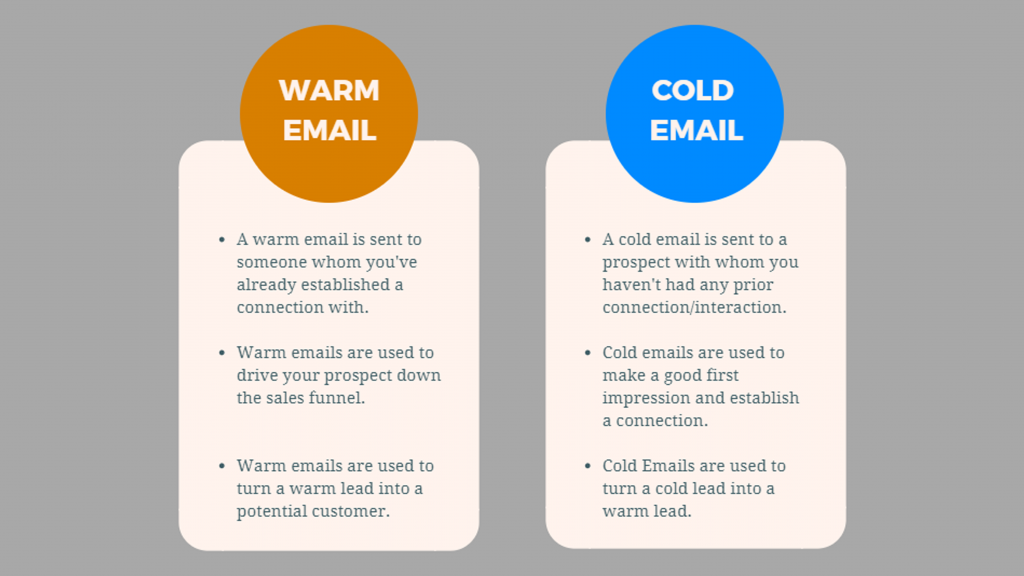
Before we get into the details of how to increase sales through email marketing, we need to address one of the biggest mistakes people make when crafting an email campaign, defining the difference between email marketing and cold email outreach.
Email marketing is designed to reach a large audience instantaneously. Companies generally rely on a database of existing customers or subscribers who have voluntarily shared their email addresses in exchange for something.
Cold emails are designed to reach individual contacts on a personal, one-on-one level. These potential customers have not shared their email addresses with you and reaching them requires developing a list of potential leads from scratch.
Both strategies can be effective, but only if executed correctly. Cold email outreach is a great way to reach potential customers who aren’t expecting to hear from your company and can build relationships that lead to future sales.
Here are the main differences between traditional email marketing and cold email outreach campaigns.
Cold Emails
- Are sent to potential customers who have not expressed an interest in your brand yet and represent the first step towards leading potential buyers down the sales funnel
- Are personalized conversations that seem more like communication between friends and family
- Allows companies to introduce themselves to potential customers
- Includes personal information that has been independently researched and not offered voluntarily
- Includes a question or call to action that intrigues the recipient and hopefully persuades them to respond
Email Marketing (Warm Emails)
- Are sent to subscribers who have voluntarily shared their contact information and expect some form of communication
- Are generalized to appeal to a wider audience and are often automated
- Allows companies to communicate with a large audience of consumers very quickly
- Include
- s a call to action that leads buyers further down the sales funnel.
Both strategies should be used by companies who want to increase their exposure to potential customers through email outreach. But understanding the differences between the two is an important step toward getting the strategy right and maximizing results.
How to Write Cold Emails to Increase Sales
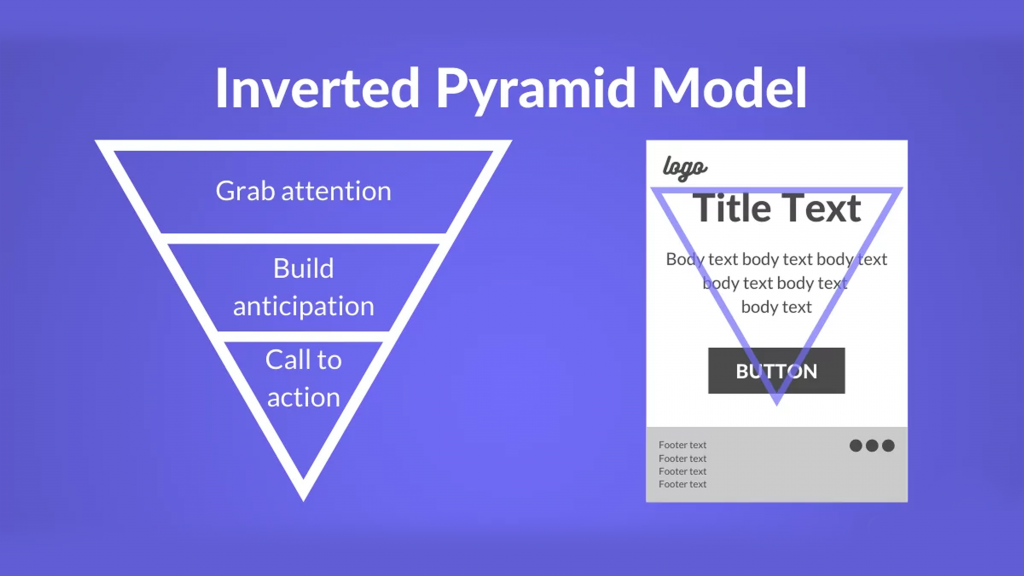
The most important aspect of cold email outreach is that it feels personal. The recipient should feel like the email is coming from someone who knows something about them and should understand that you put time and effort into learning about their interests. It needs to include a call to action that speaks directly to their needs, not yours.
Crafting a successful cold email should include knowledge of the recipients’ pain points and information on what they’re looking for in a product or service. It needs to include an offer to solve a problem for them. Create goals to evaluate the efficiency of cold email outreach campaigns, take the time to execute them the right way, and businesses will see a significant increase in sales.
Here’s how to craft a compelling cold email.
Personalize It for Them, Not You
Creating a personal interaction isn’t as difficult as it sounds. Most of the population has an easily researchable digital footprint, including their presence on social media platforms. While finding this information can be time-consuming, letting potential buyers know you’ve made an effort to get to know them is the first step to success with cold emails.
Make sure your efforts are focused on the recipient. These leads probably don’t know anything about your company, and while it might be tempting to offer tons of information about yourself, that’s not the point of cold email outreach.
Recipients need to feel like you’re offering them a potential value, or they won’t bite. The focus should be on them, including offering a solution they didn’t even know they needed.
Don’t Try to Sell, Offer Value Instead
Consider the different reactions you might have when someone offers to start a conversation with you about your personal needs, versus how it feels to have unsolicited emails that ask you to immediately buy something. Starting with a sales pitch is guaranteed to be an immediate turn-off.
These people didn’t ask to be sold something, and offering them the opportunity to meet you first is a better approach when using cold emails. It puts the ball in their court and shows them the advantage of taking the first shot.
Including a CTA, or call to action, is the best way to persuade email recipients to respond. The call to action must be concise, clear, and offer value to the potential customer. Cold emails usually include a CTA that asks for a direct response, instead of using buttons and links.
Focus on the Subject Line
When people check their inbox, the subject line is the first thing they see. And if the content of that subject line doesn’t compel them to open and read the email, it may be the only thing they see. It needs to be unique, interesting, and stand out from the long list of unopened emails in their inbox.
If it doesn’t catch their attention by offering them immediate value, that email is sure to end up in the trash pile.
Another pitfall of badly crafted subject lines is the dreaded spam folder. Avoid spammy words that will result in emails being automatically classified as spam or will cause the reader to mark it as such without ever opening it. Make sure the subject line is concise and short, so the recipient knows enough about the subject matter to want to open it.
All marketing emails, including cold outreach emails, need to follow the rules put forth in the USA CAN-SPAM act. Following the guidelines of this document will help ensure your emails don’t automatically wind up in the wrong folder.
Respect Their Time
Most cold email campaigns rely on an opening email that includes an offer to continue a conversation, followed by short series of follow-ups. Deciding when to send these follow-up emails is vital to maintaining contact with a potential lead without overdoing it.
If a recipient doesn’t respond to a cold email right away, give it a day or two before you send another. And then follow up consistently a few times at spaced-out intervals.
Decide When to Send
It can also be valuable for companies to assess when the best time is to send emails, including what time of day and even which day of the week. Believe it or not, carefully planning releases can lead to greater success.
Studies are variable, with some pointing to the hours between 8 am and 3 pm as leading to the best results, and others suggesting very early morning and late evening as better.
Another study showed that Monday and Wednesday mailing proved to have the highest open rates. You may need to do your own research into what works best for your demographic.
Set Goals to Track Progress
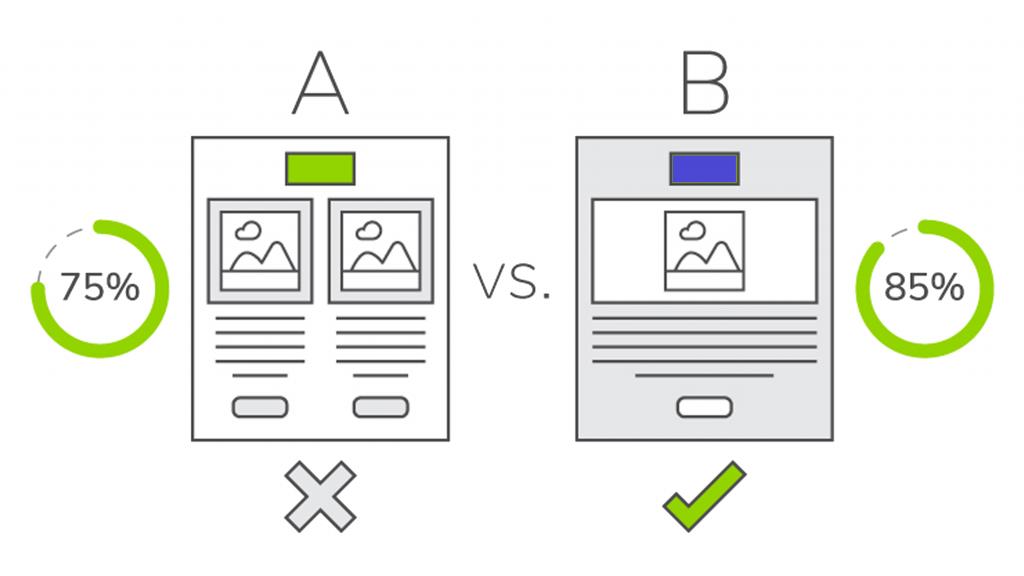
Setting goals centered around what constitutes success or failure will help businesses tweak cold emails to get the best results. Ask questions about what kind of outcomes you’re trying to reach to outline the best methods for success.
Tracking measurables is a great way to weigh the success or failure of a cold outreach campaign. Set specific goals for each of these measurables, and then track the results to figure out where changes might need to be made.
Another way to optimize results is by testing the format of cold emails with an A/B testing model. Set up two different email campaigns and test them out to see which format received a better response. You can test components independently to target what works and what doesn’t.
Benefits of Using Email Marketing for Sales
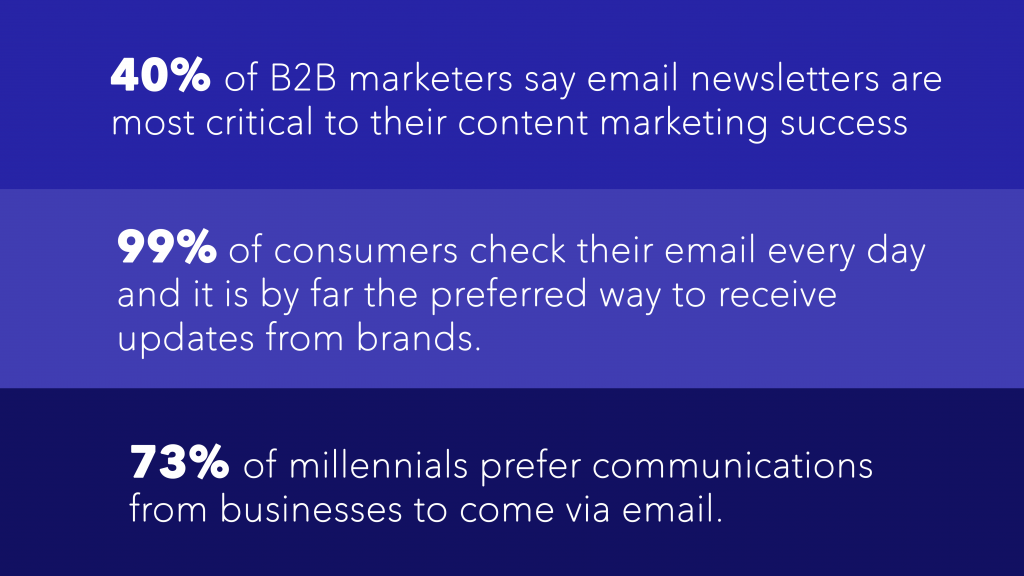
Email marketing provides a quick and easy way to generate customer traffic and feedback. And the high ROI means it’s one of the most cost-effective methods companies can use to communicate with consumers.
Using email marketing provides businesses with a way to build brand loyalty and is one of the most effective ways for increasing sales and boosting bottom-line results. We’ve compiled a list of the biggest benefits companies gain while increasing sales through email marketing.
Increased ROI and Sales
Let’s start with the big one. 59% of marketers claim that email marketing is their biggest source of increased revenue compared to investment. With the high ROI, you would assume this number would be higher. But the fact is that email marketing is underutilized. But that just means more opportunities for you.
Increased Brand Awareness
Email marketing provides an easy way for brands to consistently communicate with consumers. Whether it’s through new product announcements, informational mailings, or simply a recurring newsletter, email marketing is an effective way to keep your brand front and center of consumers’ attention.
Offer Value to Consumers
Value can mean a lot of things, and when you use a successful email marketing campaign to increase revenue, it should represent the gamut of possibilities. Customers love getting something for free, so a great way to keep them engaged is by offering discounts, coupons, and free trials. The nominal expense will be far exceeded by the increase in sales traffic it produces.
Sending informative and interesting mailings that compel the recipient to open an email and read its contents is a value as well. Offer consumers something that solves their problems or sparks their interest and emotion, and sales will come easily as a result.
Access to Valuable Consumer Feedback
Email campaigns are a great way to ask customers what they think of your brand. Gathering insights about what motivates customers to engage and buy from you can be an invaluable resource. And with an email that contains a customer satisfaction survey or a way for them to offer direct feedback, companies can access this data at little to no cost.
Using customer feedback can help companies calculate their Net Promoter Score (NPS). This measurable helps companies determine what percentage of their customer base is dedicated to their brand and which ones are not. This information can help companies best strategize their actions moving forward.
Deliver Targeted Emails to Already Engaged Customers
Spending time and effort reaching out to consumers who have already shown an interest in your brand makes sense from a marketing perspective. And that’s exactly what email marketing allows you to do.
Using an email list that’s generated by consumers who actively choose to share their information with you means they’ve already shown interest in knowing more about your brand.
Email marketing also allows companies to use list segmentation to further target emails to a selected percentage of their audience. This is proven to improve engagement rates and allows companies to share information with the consumers who are most likely to take action as a result.
Email Marketing Effectiveness in Sales
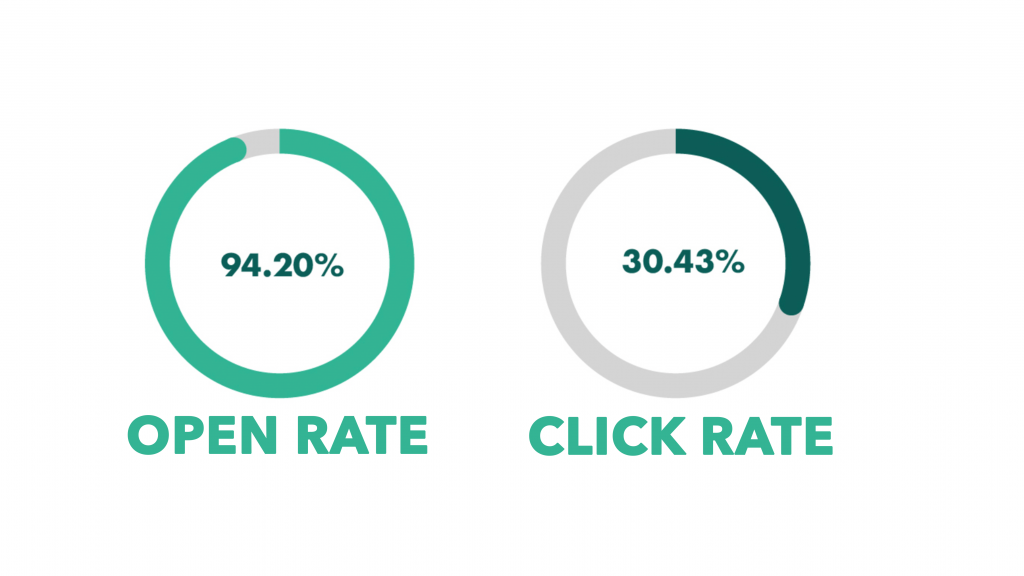
Companies that plan to increase sales through email marketing already have an advantage over those that don’t. But some strategies should be considered to make sure businesses get the most out of their time and effort. As they say, if you’re going to do something, do it right.
Optimizing email campaigns so that their full potential is used correctly can increase effectiveness. Here are three tips on how to ensure you get the most bang for your buck when investing in an email marketing campaign.
1. Make It Mobile Friendly
Here’s the scoop. 61% of marketing emails are opened via a mobile device. Ten years ago, that number was less than 30%. Studies show that the average revenue created by mobile emails is more than four times that of those opened via a desktop computer.
It only makes sense that any email marketing campaign should include optimization features that are suited for mobile users. Businesses can ensure their emails are mobile-friendly by using responsive email design software that optimizes the experience regardless of the device used. This is a tool that’s already included in most ESP software applications.
Make sure to consider what emails will look like when viewed through a mobile device versus a desktop computer. This includes the visibility of links and buttons that direct users to a CTA, what the subject and address lines look like, and experimenting with plain text versus HTML.
Anything you plan to send out should be tested on both a desktop and mobile device to ensure everything looks and works correctly on both.
2. Used Triggered Emails
Triggered emails are automated mailings that go out to recipients when an action is taken, or even when no action has been taken for a predetermined amount of time. Emails set with specific triggers are a great way to stay in consistent contact with consumers.
And this type of email is 497% more effective than regular batch emails.
With those kinds of numbers, why wouldn’t companies take advantage? It seems like common sense, especially with advancements in technology that allow businesses to set specific triggers and then send automated emails effortlessly in response.
Examples of highly useful trigger points for this type of email include:
- Activation or New User Emails
- Surprise or Reward Emails
- Win-Back or Re-engage Emails
- Thank You for Purchasing or Receipt Emails
- Birthday or Occasion Emails
3. Create a Compelling Subject Line
The subject line is one of the most important features of any email campaign. It’s the hook that gets consumers to bite. Without a properly crafted and well-thought-out subject line, the probability that your email will wind up deleted or banished to the spam folder before ever seeing the light of day is high.
The goal of any good subject line is to entice the user to click it. And 47% of recipients decide which emails to open based solely on the subject line. Equally as important is the pre-header text (also called snippet text). Both should be short, to the point, and include a clear CTA.
How to Measure Results
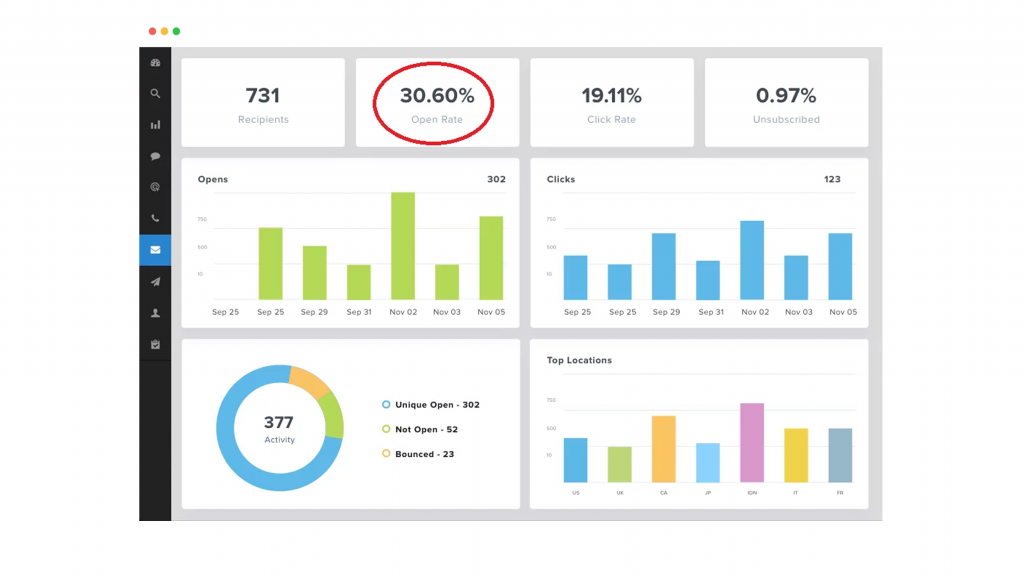
Companies can use tools to measure analytics surrounding the success of email marketing campaigns to best decide what works well and what needs changing.
Data-driven research is a must for companies that plan to use email marketing to increase sales. You wouldn’t undertake any other kind of marketing campaign without a clear and quantifiable way to measure results, and email campaigns should be no different.
Here are some common analytics that businesses can use to measure their success.
1. Bounce Rate
The bounce rate refers to the percentage of website visitors who leave immediately without taking any action. If an email campaign is successful, a company’s bounce rate should drop because visitors are being driven to your website for a reason.
2. Website Traffic
An overall increase in website traffic after an email campaign is likely, but analytics can measure what percentage of your total traffic is a direct result of those emails. Analytics tracking programs have specific settings that help filter direct traffic from email traffic.
3. Conversion Rate
A conversion rate refers to the percentage of email recipients that followed a CTA and then took a specific action. This helps businesses understand how compelling their campaigns are and how effective the CTA is. Metrics are based on what specific action was taken by users.
This number can be used to calculate the actual conversion rate. It’s a simple equation of the number of people who took action, divided by the number of emails sent, with the sum converted to a percentage.
4. Email List Growth
When you notice the number of subscribers begins to shrink, it can mean that recipients aren’t staying engaged and are actively unsubscribing from your mailings. This is a sure sign that methods need to be revisited and revamped to keep customers interested and coming back for more.
5. Share Rates
Having customers who are brand advocates is a great advantage for businesses, and one way you can tell if you have generated this type of customer is by tracking how often they share or forward an email. Every time a customer shares your email, you have increased your exposure outside of your list and possibly gain new customers in the process.
6. Spam Complaints
One of the most important metrics that companies should track relates to how often email recipients flag your mailings as spam. This number can mean you need to revisit your subject line to ensure it doesn’t come across as “spammy.” It could also point to customers who are feeling overburdened by the frequency of your mailings and are simply clicking the spam button to unofficially unsubscribe.
7. Revenue and ROI
Since the point of email marketing is to increase sales revenues, companies should track increases to measure success. To calculate your ROI, subtract the amount of money invested from the number of additional sales generated by the campaign. Then multiply that sum by the amount invested to get the total return on investment.
8. Other Measurables
Other metrics that can provide valuable insights for companies include the delivery and open rate, the click-through rate (CTR), and the click-to-open rate (CTOR). All these measurables are easily tracked using a dedicated software application, and many automated mailing programs include these analytics as a functionality.
Benefits of Knowing Your Target Audience
When businesses tailor their messages to specific groups, they dramatically improve the relevancy of the emails they send out. By segmenting a subscriber list and targeting emails to a specific demographic, the success of email marketing campaigns as a tool to increase sales only grows.
Segmenting lists leads to improved customer relationships, higher open and click-through rates, and better overall results. It allows you to offer exactly what a particular segment of subscribers is looking for without casting too wide of a net. This allows companies to incentivize their target audience without alienating everyone else.
Here are a few of the benefits companies reap when they effectively segment their audience.
- Increased ROI
- Greater Relevancy
- Improved Customer Relations
- Improved Retention Rates
- Higher Conversion Rates
Determining Your Audience
So how do businesses go about deciding who gets which emails? There are occasions when a mailing should go to every address on your contact list. But by looking at that contact list, companies can better determine how to target a specific demographic.
A good email list includes more than just email addresses, and businesses should strive to collect as much pertinent information about subscribers as possible. Things like gender, locality, birthday, and purchase history can all be leveraged to define segments.
Other segments can focus on customer needs, how they interact with your website, and if they’ve gone silent.
Only focus on segments that include enough data to be useful. Once you’ve determined what your segments should look like, it’s a simple matter of using the right ESP to define them.
What Not to Do in Email Marketing
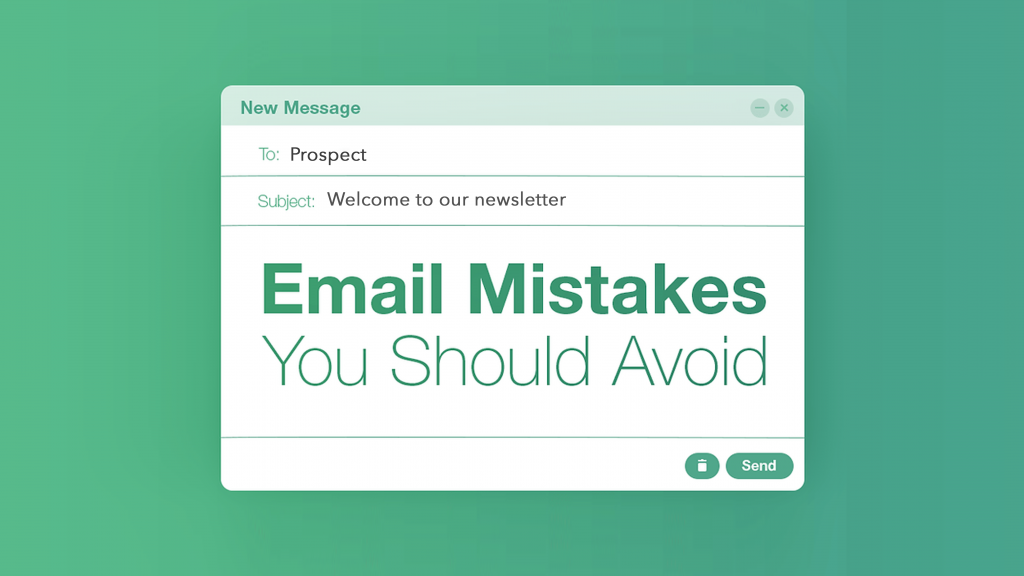
Of course, every marketing campaign involves a bit of a learning curve. But by understanding what your customers need and finding a way to meet that need, businesses can create value and increase sales through email marketing.
Knowing what works well is the first step toward success. But maybe just as important as having the information on what NOT to do. Here are some mistakes to avoid when crafting an email marketing campaign.
1. Make the Wrong Impression
That first welcome email is important, and if it’s not crafted perfectly, companies will find it harder to create success down the road. You only get one chance to make a first impression, so make sure it’s a good one.
2. Missing the CTA
No matter what style of the email you’re sending, there should be a clear call to action of some kind included. Even informational emails that aren’t promotional should have a call to action that drives readers to do something. Don’t leave it up to them to figure it out.
3. Infrequent and Inconsistent Mailing
Readers who have subscribed to your mailing list expect to receive communications from you. Make sure you uphold your end of the bargain by giving them what they asked for. If they were promised mailings on a specific topic or based on a particular frequency, you must deliver or risk them unsubscribing.
4. Unprofessional Text
A misspelled word or grammatical error within a professional communication from a company can be a deal killer. Readers won’t take you seriously or trust your professionalism when your emails look like a third-grader composed them. Customers expect very high standards around grammar, spelling, and even the choice of images, colors, and logos that are included.
5. Too Strong of a Sales Pitch
Remember that consumers want value. They don’t need you to “sell” them products. While email marketing strategies include informing customers of products and services, the goal should be to answer their needs by offering them something valuable. Avoid “salesy” language that will turn customers off.
3 Tips for Writing Great Marketing Emails
Ensuring that marketing emails are well-written and compelling is essential for success. Figuring out how and why to initiate an email marketing campaign to increase sales is only one-half of the fight. The most important part of the equation is the email itself.
A well-crafted email will make the difference between success and failure. Here are three tips on how to write great marketing emails.
1) Write Compelling Subject Lines
It bears repeating that the subject line will make the difference between success and failure for most email campaigns. Without a great subject line that grabs the reader’s attention and makes them want to read more, that email you spent time and effort crafting won’t go anywhere but the deleted folder.
A good subject line works in tandem with the preheader. The subject line should outline the contents of the email, and the preheader should give the reader a reason to take action.
There are a variety of methods you can use to draw your reader’s eyes to your subject line. A few examples are:
- List articles (Top ten or similar offerings)
- Announcements
- Questions
- Deadlines
- Jokes and teasers
- Rhyming words
- Alliterations and Allusions
- Multimedia offerings
3) Focus on the Text
When a recipient decides to open your email, the layout and text must catch their attention quickly. People have a very short attention span while reading emails. So, if you don’t hook them right away, you’ve most likely lost them.
Here are a few tips on how to create an email that will keep readers scrolling down instead of clicking away.
- Use bold headers for easy scanning
- Include eye-catching graphics and logos, but don’t overcrowd the page with them
- Keep the focus on the text
- Include personalization
- Offer value to the reader right away
- Use short paragraphs for easy reading
- Use SEO keywords correctly
- Write in the second person to keep the focus on the reader
3) Include a Compelling Call to Action
A good marketing email consists of three vital components: the subject line, the email content, and a call to action. Together these three things make up the trifecta of a perfectly crafted promotional email.
While all three of these things can be considered equally important for the success of a campaign, it’s the call to action that represents the main purpose of the email. Of course, other valuable benefits can be gained from a well-written email, but without a compelling call to action, you’ve missed an opportunity and the point.
The call to action needs to be:
- Clear and concise
- Easy to Find on the Page
- Easy to use on both mobile and desktop devices
- Offer value to the customer
- Use actionable language
- Plentiful but not overwhelming
Final Thoughts
Email marketing is a valuable tool for companies that hope to build customer loyalty and create brand awareness. Every way you look at it, there is value for businesses that shouldn’t be overlooked. It offers businesses an easy channel to reach a global audience quickly, efficiently, and with very little cost and effort.
There are many tools available to streamline and automate the process of creating meaningful and successful email marketing campaigns. And this allows you to easily create, customize, and execute a campaign that will almost be a guaranteed way to increase sales through email marketing.
Including email as a part of a marketing strategy can reap huge rewards for a company. Using emails to increase sales and revenue will get better results than any other digital avenue, including search engine optimization and social media marketing. Studies show that 85% of US retailers consider email marketing to be the most effective way to reach customers. The numbers don’t lie.
Take advantage of the amazing benefits that can be obtained through a well-planned and executed email marketing campaign. The customers are out there. What are you waiting for?

